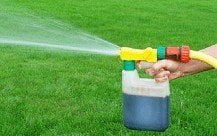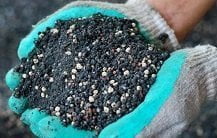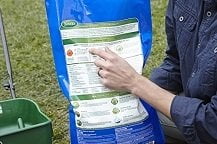10 Best Lawn Fertilizers to Buy In 2025
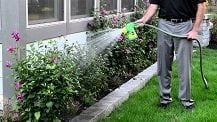
Your lawn needs nutrients to make it lush, green and healthy. And when talking about nutrients, lawns have a specific fertilizer requirement that depends on the type of grass and the season. Therefore, you just can’t go pick a fertilizer and assume you’ve got the best lawn fertilizer.
This article guides you to choosing the best lawn fertilizer based on the three most important elements your lawn needs: nitrogen, phosphorus and potassium.
| Product Photo | Product Name | Rating | Price |
|---|---|---|---|
| [su_image asin=B005W1QXQW title="Scotts Turf Builder Lawn Food" src="https://woodworkingtoolkit.com/wp-content/uploads/2018/01/Scotts-Turf-Builder-Lawn-Food.jpg"] | [su_title asin=B005W1QXQW title="1. Scotts Turf Builder Lawn Food"] | 4.1 | [su_asinbutton asin=B005W1QXQW] |
| [su_image asin=B000P0FHQ2 title="Miracle-Gro Water Soluble Lawn Food" src="https://woodworkingtoolkit.com/wp-content/uploads/2018/01/Miracle-Gro-Water-Soluble-Lawn-Food.jpg"] | [su_title asin=B000P0FHQ2 title="2. Miracle-Gro Water Soluble Lawn Food"] | 4.3 | [su_asinbutton asin=B000P0FHQ2] |
| [su_image asin=B00XJM8KMQ title="Scotts Turf Builder Weed and Feed Fertilizer 5M" src="https://woodworkingtoolkit.com/wp-content/uploads/2018/01/Scotts-Turf-Builder-Weed-and-Feed-Fertilizer-5M.jpg"] | [su_title asin=B00XJM8KMQ title="4. Scotts Turf Builder Weed and Feed Fertilizer 5M"] | 3.7 | [su_asinbutton asin=B00XJM8KMQ] |
| [su_image asin=B01BI8K6S8 title="Simple Lawn Solutions Lawn Energizer" src="https://woodworkingtoolkit.com/wp-content/uploads/2018/01/Simple-Lawn-Solutions-Lawn-Energizer.jpg"] | [su_title asin=B01BI8K6S8 title="4. Simple Lawn Solutions Lawn Energizer"] | 4.0 | [su_asinbutton asin=B01BI8K6S8] |
| [su_image asin=B000UGPK9U title="Milorganite 0636 Organic Nitrogen Fertilizer" src="https://woodworkingtoolkit.com/wp-content/uploads/2018/01/Milorganite-0636-Organic-Nitrogen-Fertilizer.jpg"] | [su_title asin=B000UGPK9U title="5. Milorganite 0636 Organic Nitrogen Fertilizer"] | 4.2 | [su_asinbutton asin=B000UGPK9U] |
| [su_image asin=B00827I5B4 title="Scotts Green Max Lawn Food" src="https://woodworkingtoolkit.com/wp-content/uploads/2018/01/Scotts-Green-Max-Lawn-Food.jpg"] | [su_title asin=B00827I5B4 title="6. Scotts Green Max Lawn Food"] | 4.0 | [su_asinbutton asin=B00827I5B4] |
| [su_image asin=B00A8PGEES title="Azomite Micronized Bag" src="https://woodworkingtoolkit.com/wp-content/uploads/2018/01/Azomite-Micronized-Bag.jpg"] | [su_title asin=B00A8PGEES title="7. Azomite Micronized Bag"] | 4.7 | [su_asinbutton asin=B00A8PGEES] |
| [su_image asin=B00DK49BXK title="Scotts Turf Builder Lawn Food – Starter Food for New Grass" src="https://woodworkingtoolkit.com/wp-content/uploads/2018/01/Scotts-Turf-Builder-Lawn-Food-Starter-Food-for-New-Grass.jpg"] | [su_title asin=B00DK49BXK title="8. Scotts Turf Builder Lawn Food – Starter Food for New Grass"] | 3.9 | [su_asinbutton asin=B00DK49BXK] |
| [su_image asin=B071SG42FG title="Diatomaceous Earth Food Grade" src="https://woodworkingtoolkit.com/wp-content/uploads/2018/01/Diatomaceous-Earth-Food-Grade.jpg"] | [su_title asin=B071SG42FG title="9. Diatomaceous Earth Food Grade"] | 4.5 | [su_asinbutton asin=B071SG42FG] |
| [su_image asin=B00D15WRYI title="American Hydro Systems 2655 GrassSoGreen Fertilizer" src="https://woodworkingtoolkit.com/wp-content/uploads/2018/01/American-Hydro-Systems-2655-GrassSoGreen-Fertilizer.jpg"] | [su_title asin=B00D15WRYI title="10. American Hydro Systems 2655 GrassSoGreen Fertilizer"] | 4.7 | [su_asinbutton asin=B00D15WRYI] |
10 Best Lawn Fertilizers - Reviews
1. Scotts Turf Builder Lawn Food
Editor's Rating:  (4.4 / 5)
(4.4 / 5)
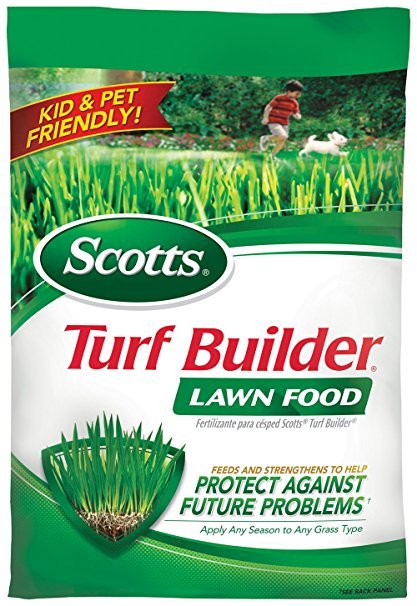
This is an all-season fertilizer that works to feed and strengthen your lawn for maximum protection in future. It helps develop strong and deep roots. This results into improved absorption of water and nutrients compared to the unfertilized lawn.
This grass fertilizer is infused with Scotts’ All-in-One Particle technology that functions to promote even greening and feeding. It’s versatile enough to be used on any type of grass. The fertilizer has a coverage of 5,000 square feet, which makes it ideal for medium-sized lawns. Application can be done on either wet or dry lawn.
However, when temperatures are above 90 degrees Fahrenheit, it’s recommended that you water immediately after application to reduce stress. For best results, use Scotts Turf Builder EdgeGuard Mini Broadcast spreader.
The feed is applied after every 6 to 8 weeks for best results. Scotts Turf Builder Lawn Food has an indefinite shelf life with NPK composition of 32-0-4.
[su_asin asin="B005W1QXQW"]
2. Miracle-Gro Water Soluble Lawn Food
Editor's Rating:  (4.6 / 5)
(4.6 / 5)
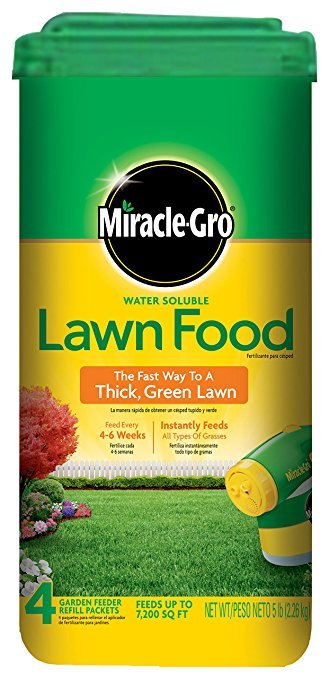
Coming in a 5-pound package, this grass fertilizer gives fast results within a few days. This lawn food contains a high percentage of nitrogen and chelated iron to guarantee a greener lawn in no time. It’s a versatile lawn food that can be used on all types of turfgrass. And doesn’t cause any burn when used as directed.
Its soluble nature lets you feed while you water so there’s no need to irrigate after application. The foliar feeding mechanism of this fertilizer guarantees quick absorption through the roots and leaves. This rapid absorption means that you need to fertilize more often after every 2 to 3 weeks.
This lawn food has a coverage of up to 4,000 square feet. It has a NPK composition of 36-0-6 with an indefinite shelf life.
[su_asin asin="B000P0FHQ2"]
3. Scotts Turf Builder Weed and Feed Fertilizer 5M
Editor's Rating:  (4 / 5)
(4 / 5)
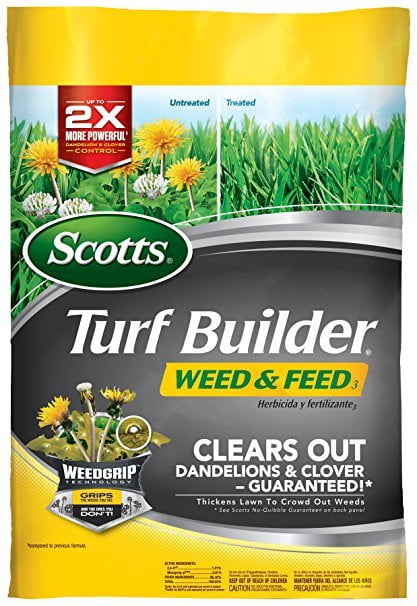
This formulation is two times more powerful compared to the previous one. It has a 2-in-1 function: lawn feeder and weed killer. This weed and fertilizer makes quick work of weeds, such as dandelions and clover. In short, it works to thicken lawns and crowd out weeds.
Weed eradication is made even more efficient with a WeedGrip technology that grips every inch of weed on your lawn. Apart from fighting weed, the fertilizer works to develop roots that are stronger and deeper. Application is best done using a spreader on a wet lawn.
Watering is not recommended for at least 24 hours after application. The best time for application is daytime when weeds are actively growing. However, ensure that the temperature is between 60 degrees Fahrenheit and 90 degrees Fahrenheit. Application is done up to two times per year leaving a minimum of 30 days between applications.
Grass varieties recommended for this lawn fertilizer include Kentucky bluegrass, fescue, Bermuda grass, ryegrass, bahia grass, centipede grass and zoysia. Scotts Turf Builder Weed and Feed Fertilizer has a coverage area of 5,000 square feet.
[su_asin asin="B00XJM8KMQ"]
4. Simple Lawn Solutions Lawn Energizer
Editor's Rating:  (4 / 5)
(4 / 5)
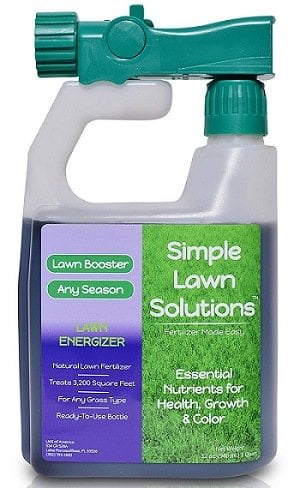
This is a natural liquid grass fertilizer that comes as a concentrate. It contains essential vitamins and nutrients that work to maximize health and growth. A greener lawn is guaranteed by its high concentration of nitrogen. This lawn booster fertilizer comes in an all-natural non-toxic formula that’s safe for your kids and pets.
This micro-nutrient booster has a versatile working mechanism that makes it ideal for all grass types. It comes in a ready-to-use hose end sprayer for added convenience. The fertilizer comes in a 32-ounce package that covers up to 3,200 square feet, a feature that makes it ideal for use on small lawns.
It has a fertilizer analysis of 20-4-8, which means that it contains all the essential nutrients required for growth. Application time is not restricted as it can be done at any time of the year.
[su_asin asin="B01BI8K6S8"]
5. Milorganite 0636 Organic Nitrogen Fertilizer
Editor's Rating:  (4 / 5)
(4 / 5)
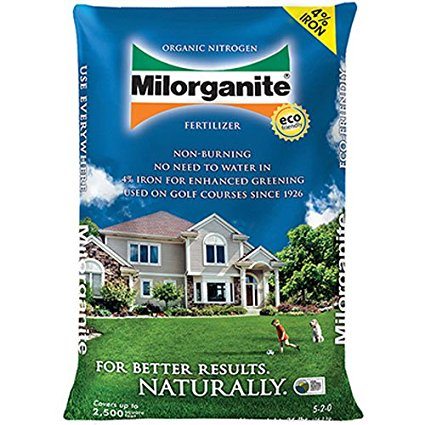
This is a slow release organic nitrogen fertilizer that’s comprised primarily of heat-dried microbes. Milorganite 0636 finds great application both in homes and golf courses. The slow-release mechanism provides long-lasting results of up to 10 weeks. That means that you get to fertilize less while giving your grass the nutrients it needs.
That vibrant green color is guaranteed by iron minerals that makes up 4% of the fertilizer. Composed of a salt-free formula, this fertilizer is safe enough not to burn your lawn nor create burn spots. Milorganite 0636 provides the convenience of an organic-based fertilizer. With 85% organic matter, this fertilizer promotes healthy soil.
This fertilizer has been tested to ensure it’s safe for children and pets. This fertilizer comes in a 36-pound package and covers up to 2,500 square feet, a coverage that’s ideal for small lawns. Milorganite 0636 is an all-purpose fertilizer for use on lawns, flowers, shrubs, golf courses, among others.
[su_asin asin="B000UGPK9U"]
6. Scotts Green Max Lawn Food
Editor's Rating:  (4.3 / 5)
(4.3 / 5)
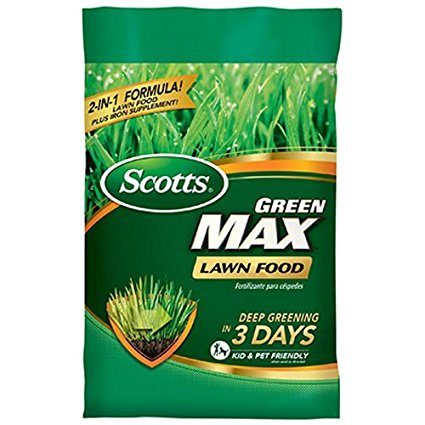
Scotts Green Max provides deeper greening in just 3 days. This is achieved via the essential nutrients present in the fertilizer. Composed of a dual-action formula, the fertilizer feeds your lawn and supplements it with 5.17% iron for that stain-free lawn. This fertilizer works great in bare spots, thanks to its ability to thicken grass for effective spreading.
Apart from covering bare spots, the thickening helps much in crowding out new weed. This lawn food works great for all grass types. Application is done any season on a wet or dry lawn.
It’s recommended that you feed after every 6 to 8 weeks for best results. This grass fertilizer has a coverage of 5,000 square feet, which is ideal for medium lawns. Scotts Green Max has NPK composition of 27-0-2.
[su_asin asin="B00827I5B4"]
7. Azomite Micronized Bag
Editor's Rating:  (4.8 / 5)
(4.8 / 5)
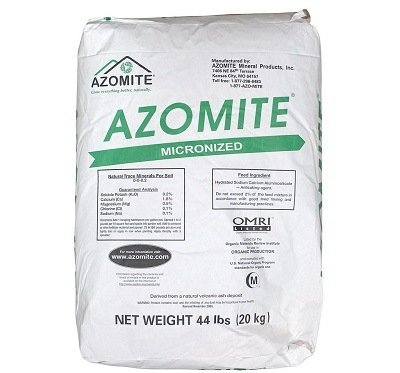
This is a micronized fertilizer derived from a natural volcanic ash deposit. The fertilizer comes in an ultra-fine powder form that provides maximum initial growth. It has natural trace minerals that promote deeper, greener grass with vibrant bloom. This broad-spectrum fertilizer has over 70 trace elements and minerals that are unique in their own way.
The fertilizer works to re-mineralize soil for optimum growth. It improves everything from root system, plant health to yield. This lawn food works on all types of soils and can be used to feed all types of grasses.
It’s recommended to use broadcast application after which the lawn is watered to reduce stress. Application is done up to 4 times a year. The application rate is 3.5 pounds per 1,000 square feet for lawns and 1 pound per 10 square feet for flowerbeds. Coming in a 44-pound bag, this grass fertilizer has a coverage of 12,000 to 15,000 square feet.
[su_asin asin="B00A8PGEES"]
8. Scotts Turf Builder Lawn Food - Starter Food for New Grass
Editor's Rating:  (4.3 / 5)
(4.3 / 5)
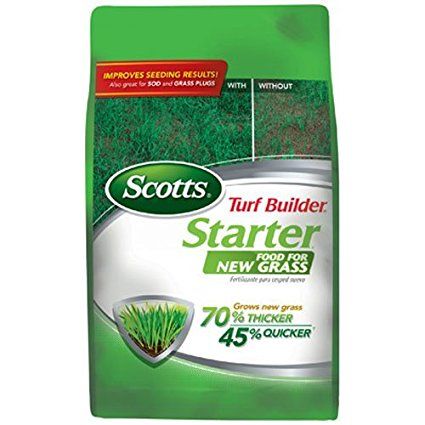
This is a starter fertilizer ideal for newly planted grass. Compared to unfed grass, this fertilizer lets new grass grow 70% thicker and 35% faster. This is achieved through enhanced root and blade development. Apart from improving seeding results, this lawn food is also great for grass plugs and sod.
It has NPK ratio of 24-25-4, a ratio that creates ideal nutrient balance. This lawn food is suitable for all types of grass. It’s best applied in early spring to coincide the seeding season. This lawn food doesn’t need watering in after application.
That means that application isn’t recommended when heavy rains is expected. The fertilizer comes in a package that is enough to provide a coverage of 1,000 square feet.
[su_asin asin="B00DK49BXK"]
9. Diatomaceous Earth Food Grade
Editor's Rating:  (4.5 / 5)
(4.5 / 5)
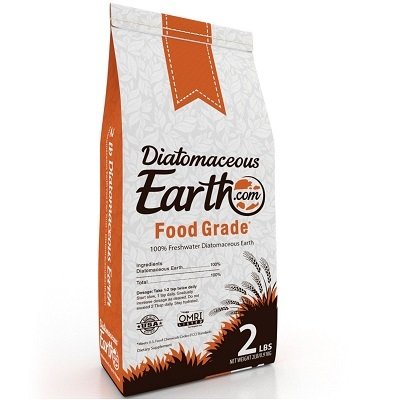
This food grade fertilizer provides a natural remedy for your lawn and garden. Made of freshwater plankton, this fertilizer has a versatile working mechanism that can be put to hundreds of different uses. It comes in form of a powder with no additives, a feature that makes it safe to your pets and children.
Diatomaceous Earth Food provides a non-toxic way of controlling pests in your lawn. It increases porosity, a feature that promotes the release of water and other fertilizers into the soil.
This fertilizer has unlimited shelf life, which means that you can use it on your lawn for many years to come. It comes in a professional packaging of 10 pounds that’s enough for large projects. This lawn food is highly absorbent and is entirely made of silica.
The fertilizer is suitable for both dry and wet application. Since rain tends to wash away this fertilizer, it’s recommended that you apply in clam and clear weather.
[su_asin asin="B071SG42FG"]
10. American Hydro Systems 2655 GrassSoGreen Fertilizer
Editor's Rating:  (4.9 / 5)
(4.9 / 5)
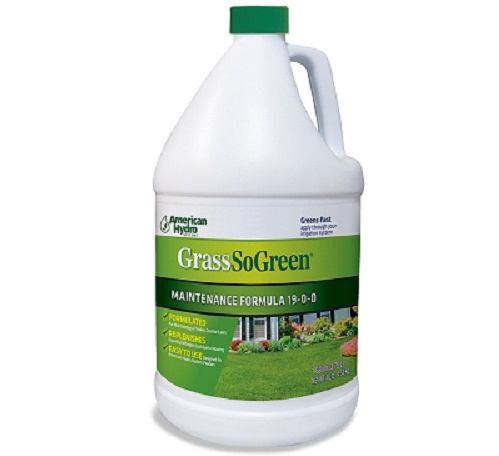
With a fertilizer ratio of 19-0-0, this grass fertilizer has a higher percentage of nitrogen that comes in handy to maintain a thicker and greener lawn. It replenishes essential nitrogen lost during mowing.
The fact that it’s designed for American hydro system feeders makes it much easier to use. This maintenance formula doesn’t burn your lawn and is great for all types of grasses. It’s recommended that you apply monthly for best results.
This lawn fertilizer comes in a 1-gallon container. Being a concentrate, it requires mixing to get that quick absorbing liquid fertilizer. The 1-gallon container has a coverage of 4,000 square feet.
[su_asin asin="B00D15WRYI"]
Liquid vs. Granular Lawn Fertilizer
There are many ways that you can use to categorize yard fertilizers. But the most logical way is to categorize them as “liquids” and “granulars.” Choosing between the these two types of fertilizers can be quite confusing even to the most avid gardener. Weighing the pros and cons of each type is crucial to creating a healthy lawn.
#1. Liquid Lawn Fertilizer
This type of yard fertilizer comes in the form of a concentrate or water-soluble powder of synthetic chemicals. Liquid fertilizers are composed of various nutrients including nitrogen, phosphorus, potassium and iron. The powder mix or concentrate are diluted to create a solution. This is then applied using spray bottles or sprinklers.
Liquid fertilizers are generally fast-acting and quickly absorbed through the leaves or roots. This makes nutrients available to plants almost instantly. The fast absorption rate means that liquid fertilizers need to be applied more frequently after every 2 to 3 weeks. They’re best used in container plants but also do great on lawns.
Pros
- Easy application and handling once set up
- Uniformity of application
- Tend to blend well with crop protection products
- Great for starter and in-season application
- Act quickly to make nutrients available to plants
Cons
- Can cause severe damage in case the directions are not followed
- Can leach deep into the soil making it unavailable
- Require more frequent applications compared to granular fertilizers
- Contribute to water pollution in case it seeps into storm drains
#2. Granular Lawn Fertilizer
This is a slow-release fertilizer that’s worked into the soil after sprinkling or spreading. The slow absorption rate of granular fertilizers make them last longer. The release period tends to vary depending on the type of fertilizer used and other environmental conditions. Generally, the release period lasts form one month to nine months.
The slow-release mechanism means that granular fertilizers are applied less often compared to liquid fertilizers. That said, this type of fertilizer greatly reduces the chances of damaging your lawn. You can also get chemical-free organic fertilizers as they’re commercially available.
Pros
- Much more cost effective to apply
- Phenomenal fertilizer that can be applied in dry and hot periods of the year
- Slow-release process means that you apply less often compared to liquid fertilizer
- Slow-feeding process avoids burning
- More efficient for the heavy pre-plant application
Cons
- Take a long time to give positive results
- Slow-release process not good for helping recover from deficiencies
- Require warm temperature and moisture to act
- Inappropriate application tends to leave streaks of burned grass
- Soil pH adversely affects their effectiveness
Nutrients of Fertilizers
Yard fertilizers are comprised of three primary nutrients essential for healthy plant growth. Lack of these nutrients means that your lawn can’t grow to its full potential and will also become more susceptible to diseases. The three essential nutrients are referred to as macronutrients. These are Nitrogen (N), Phosphorus (P) and Potassium (K), abbreviated as NPK.
#1. Nitrogen (N)
This is a key component that influences plant’s growth. Being one of the elements in chlorophyll, nitrogen functions to fuel vegetative growth, especially the stem, foliage and branches. Nitrogen is a significant component in amino acids, which is the basis of proteins. What’s more, nitrogen aids in the formation of compounds that promote storage and use of energy.
Symptoms that indicate deficiency of nitrogen include stunted growth and yellowing of leaves. Common inorganic sources of nitrogen in NPK blends are urea, anhydrous ammonia and ammonium nitrate. Common organic sources include blood meal, compost, manure and feather meal.
#2. Phosphorus (P)
Phosphorus has an array of functions related to healthy plant growth. It’s a stimulant for root development, flower formation and seed formation. The level of phosphorus varies depending on the soil pH. This element becomes most available to plants in a soil pH of 5.5 to 7. Unlike nitrogen that leaches and depletes fast in the soil, phosphorus tends to remain in the soil. That means you only need to add it up to accommodate new growth.
Like nitrogen, phosphorus comes in both organic and inorganic form in the NPK blend. The primary source of inorganic phosphorus is the phosphate rock. This rock is crushed and applied directly to plants. Organic sources of phosphorus include compost, manure, blood meal, bone meal and bio-solids.
#3. Potassium (K)
Potassium is a key element that contributes to growth and development. It functions to promote root growth, bud growth and fruit ripening. Apart from promoting growth, potassium promotes resistance against disease, drought, freeze and heat. It helps plants thrive, especially in changing weather conditions. Like phosphorus, potassium tends to remain in the soil.
Inorganic sources of potassium in NPK blend include potash (primary source), granite dust, potassium sulfate and langbeinite. Best organic lawn fertilizers composed of potassium are manure, compost and wood ash.
How to Read Label
On a fertilizer package, there are three prominent numbers known as NPK value, fertilizer grade or guaranteed analysis. The NPK value indicates the percentage of the available primary macronutrients by weight and it’s quite important in helping you get the best fertilizer for your lawn. Nitrogen (N) is the first number, Phosphorus (P) the second and Potassium (K) the third.
For instance, a package with NPK value of 15-30-15 contains 15% nitrogen, 30% phosphorus and 15% potassium. Therefore, you should choose a fertilizer based on the ratio of these macronutrients to each other. For instance, 15-30-15 represents NPK ratio of 1:2:1. This means that the fertilizer contains one part nitrogen, two parts phosphorus and one part potassium.
To guide you in your choosing, flowering plants generally thrive on NPK ratio of 15-30-15. For best lawn fertilizer brands, you may use those with NPK ratio of 10-1-1 though that may vary depending on the soil pH. All-purpose fertilizers generally have NPK ratio of 1-1-1.
Fast-Release vs. Controlled-Release Nitrogen Fertilizer
Nitrogen is possibly the most widely used nutrient that promotes growth. The level of response largely depends on the source of nitrogen used and the application rate. Based on the nitrogen source you use, the length of nutrient release might vary. Based on that, there are two main release that coincide with the type of nitrogen fertilizer used. These are fast-release and controlled-release mechanisms.
#1. Fast-Release Nitrogen Fertilizer
Fast-release nitrogen sources are sometimes referred to as “soluble” nitrogen sources. Fertilizers that release nitrogen quickly include ammonium sulfate, ammonium nitrate, calcium nitrate, stabilized urea and urea. Generally, the release period is within one week. However, some of these fertilizers release 100 percent of their nitrogen within 24 hours following application.
Pros
- Quick response (greening)
- Provide nitrogen when soils are cold
- Relatively inexpensive
Cons
- More likely to burn grass
- Losses through air or soil is more likely
- May cause an undesirable large flush of growth
- Several applications are required to maintain lawn quality
#2. Controlled-Release Nitrogen Fertilizer
Controlled-release nitrogen fertilizers are sometimes referred to as “polymer” or “resin” coated fertilizers. This is because the manufacturing process involves coating the nitrogen substrate with either resin or polymer. The coating functions to work as a membrane and its thickness is what affects the length of release.
Generally, the duration of release ranges for 8 to 52 weeks following application. The release process is a controlled one since it can be predicted and evaluated. Examples of controlled-release nitrogen fertilizers are sulfur-coated urea, activated sewage sludge and water-insoluble nitrogen.
Pros
- Provide uniform grass growth
- Less likely to be lost through air or soil
- Not likely to burn grass
Cons
- Most controlled-release nitrogen fertilizers are expensive
- Doesn’t result into quick color change in grass
- May not work on cold soils
When to Fertilize Lawn
A lawn needs feeding to keep it healthy and lush. Keeping it healthy makes it more tolerant to heat, drought, cold, foot traffic,mow and other stresses. The frequency of feeding is what distinguishes an ordinary lawn from a healthier one. With that in mind, you need to follow a regular feeding schedule that will make it lusher and greener. The following are the best times to fertilize your lawn:
- Early Spring (February to April): Fertilizing your lawn in spring help strengthen the roots in preparation for the heavy growing season. For instance, if you had crabgrass the previous year, then it’s best to apply a combination product that contains pre-emergent to control crabgrass. In short, you need to fertilize your lawn the first time it needs mowed in spring.
- Late Spring (April to June): Late spring is more like a lunchtime for lawns. This is the time when the lawn is busy using its stored energy. For that reason, you need to supplement it. Since weeds are active at this time, it would be good to use a weed and feed fertilizer that wipes out the weeds while feeding your grass. One of the best lawn fertilizer for spring is Scotts Turf Builder Weed & Feed.
- Summer (June to August): Summer can be quite tough on the grass due to the heat. The lawn becomes even more stressed in case drought sets in or when subjected to foot traffic and insect infestation. When feeding in summer, use a fertilizer that contains insect control.
- Fall (September to November): Fall tends to bring back the growing conditions to normal. Since the grass is ready to grow again, it needs nutrients to aid in the growth process. This helps it recover from summer damage. Winter guard fall lawn food is recommended as it increases nitrogen storage and strengthens roots in preparation for early spring.
Read More: 7 Best Fertilizer Spreaders
Reference: garden-counselor-lawn-care.com, lowes.com, illinois.edu, scotts.com
Last Updated on April 30, 2019 by Tom Bradly

